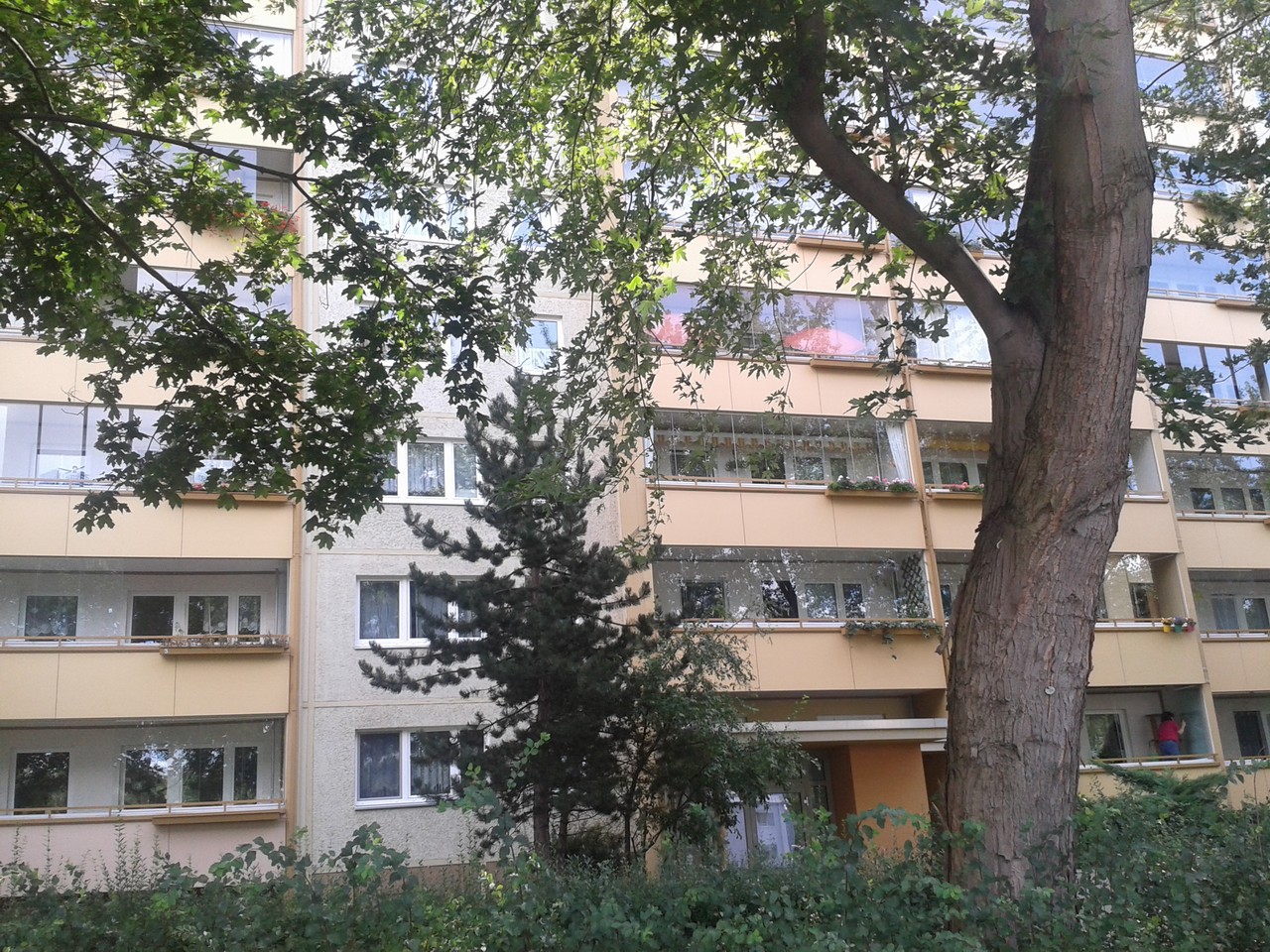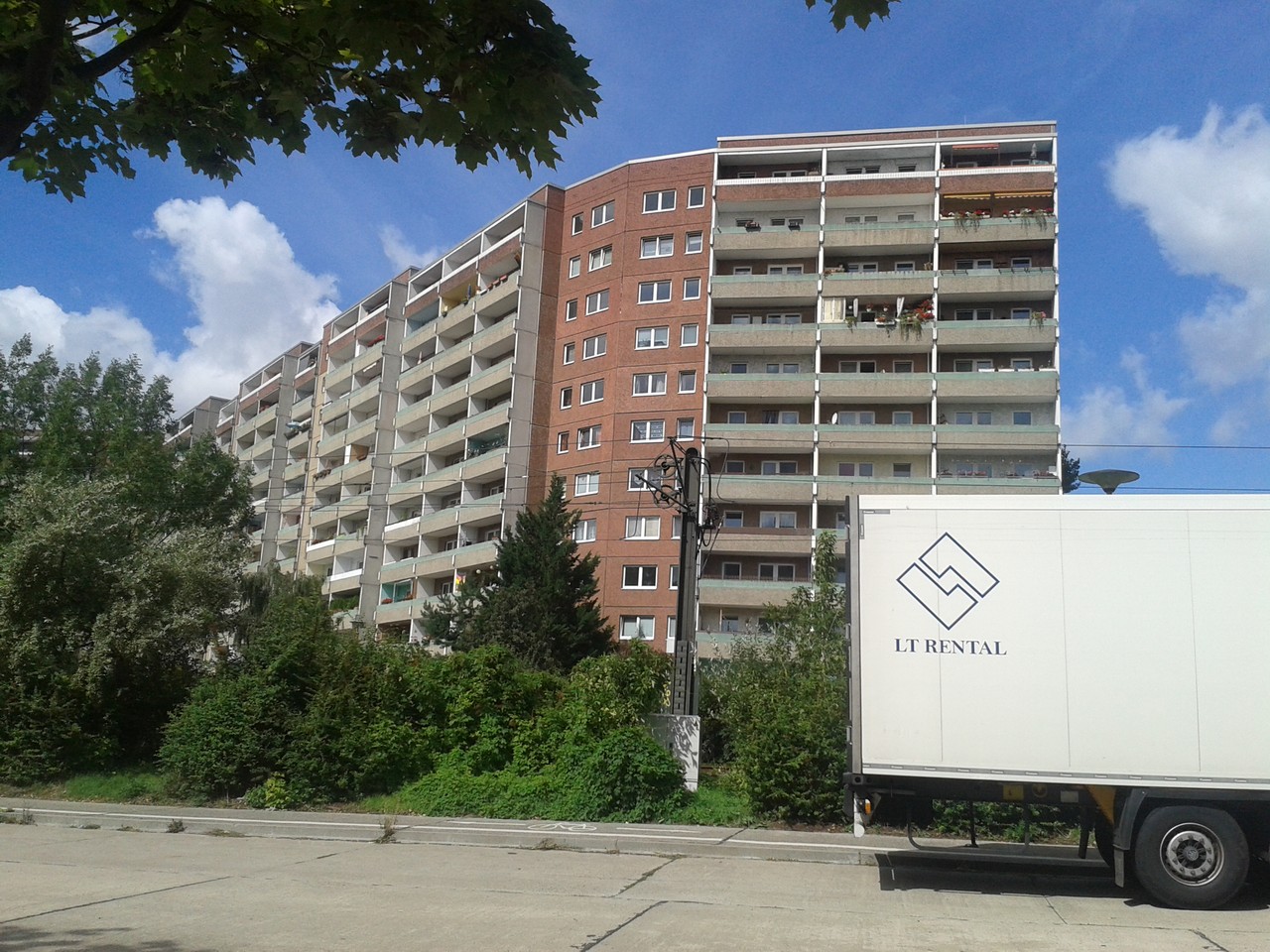Well, the area looks well kept. How popular are the apartments in these houses today, and how well regarded is the area?
We have similar suburbs in Stockholm, although built somewhat earlier, mostly in the sixties. Many of these suburbs are now populated mostly by immigrants, and they have a low status.
It actually depends. In Berlin there were three buroughs built that way: Marzahn, Hellersdorf and Hohenschönhausen.
And each one of them has their good corner and their bad corner (Marzahn alone has a popultation of ~137,000).
After reunification it really depended on who adminstered a certain block. Some turned into cooperatives where every tennant holds a share. These are usually the better-kept ones because the tennants have a say in which modernisations whould be done and when.
Other companies just wanted to make a quick buck and they took money from the government to house asylants and immigrants and instead of spreading them over the burough they put them all in the same quarters. The neighbourhoods went south and the locals moved to other parts of the burrough or even other burroughs.
For example this one:

Is a cooperative where my mom and my granny live.
This one on the other hand is on the other end of the burrough and almost in original conditions from when it was built:

That's where mostly immigrants and people who've fallen on hard times live.